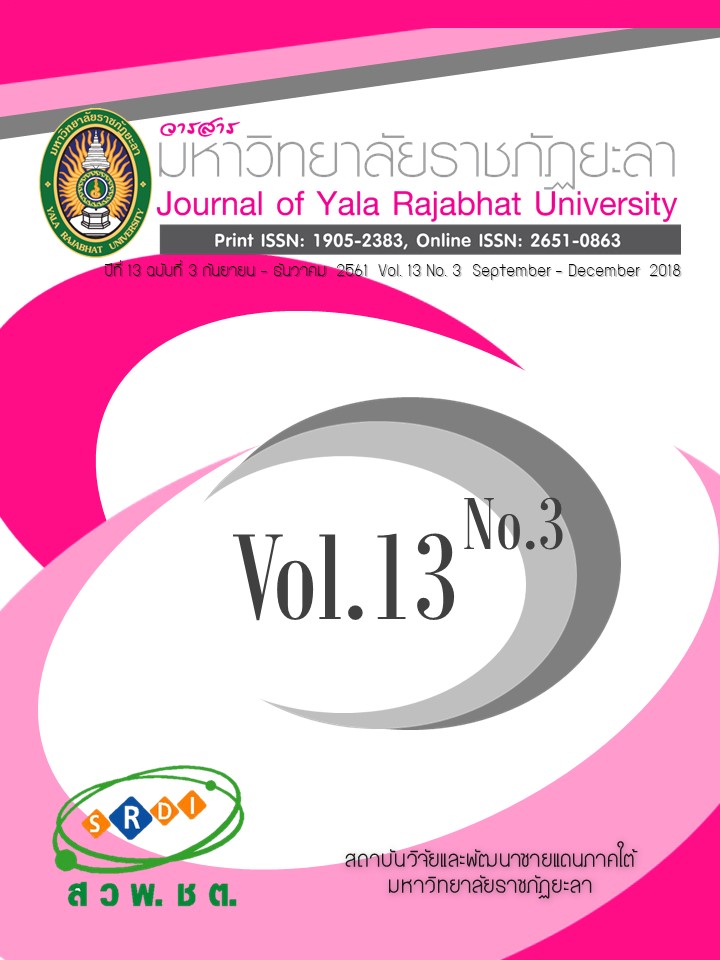ปัจจัยที่มีอิทธิพลต่อประสิทธิผลการทำงานของคณะผู้กำกับดูแลผู้เสียภาษี สังกัดกรมสรรพากร ในเขตภาคตะวันออกเฉียงเหนือตอนบน
Main Article Content
บทคัดย่อ
การศึกษานี้มีวัตถุประสงค์ในการศึกษา คือ เพื่อศึกษาปัจจัยที่มีอิทธิพลต่อประสิทธิผลการทำงานของคณะผู้กำกับดูแลผู้เสียภาษี สังกัดกรมสรรพากร ในเขตภาคตะวันออกเฉียงเหนือตอนบน ภายใต้ระเบียบการวิจัยเชิงปริมาณ ใช้แบบสอบถามเป็นเครื่องมือในเก็บรวบรวมข้อมูลกับผู้รับบริการหรือผู้เสียภาษีที่อยู่ในการกำกับดูแลของคณะผู้กำกับดูแลผู้เสียภาษี สังกัดกรมสรรพากร ในเขตภาคตะวันออกเฉียงเหนือตอนบน จำนวน 540 ราย วิเคราะห์ข้อมูลด้วยสถิติอย่างง่าย ร่วมกับการวิเคราะห์องค์ประกอบ (Factor Analysis) ผลการศึกษาพบว่า การวิเคราะห์องค์ประกอบเชิงยืนยันโมเดลการวัดของตัวแปรทั้งหมด 36 ตัวแปร จาก 4 ปัจจัย ได้แก่ ปัจจัยหลักภาษี ปัจจัยการบริหาร ปัจจัยส่วนประสมทางการตลาด และประสิทธิผลการทำงานของคณะผู้กำกับดูแลผู้เสียภาษี พบว่า โมเดลมีความสอดคล้องกับข้อมูลเชิงประจักษ์ ( = 750.02 df = 568 /df = 1.32 p= .56 SRMR = .02 RMSEA = .00 GFI = .95 AGFI = .94 CFI= 1.00 NFI = .98 NNFI = 1.00) ทั้งนี้ ตัวแปรในโมเดลปัจจัยการบริหารและปัจจัยส่วนประสมการตลาดส่งผลต่อประสิทธิผลการทำงาน ร้อยละ 83.0 และ 86.0 ตามลำดับ นอกจากนี้ตัวแปรปัจจัยการบริหารมีอิทธิพลทางตรงต่อปัจจัยส่วนประสมทางการ ตลาด และประสิทธิผลการทำงาน อย่างมีนัยสำคัญทางสถิติที่ระดับ .01 ในขณะเดียวกันตัวแปรปัจจัยหลักภาษีก็มีอิทธิพลทางตรงต่อปัจจัยส่วนประสมทางการตลาด และประสิทธิผลการทำงาน และมีอิทธิพลทางอ้อมผ่านปัจจัยส่วนประสมทางการตลาด อย่างมีนัยสำคัญทางสถิติที่ระดับ .05 อนึ่งตัวแปรปัจจัยส่วนประสมทางการตลาด ก็มีอิทธิพลทางตรงต่อประสิทธิผลการทำงานของคณะผู้กำกับดูแลผู้เสียภาษีสังกัดกรมสรรพากร อย่างมีนัยสำคัญทางสถิติที่ระดับ .05
Article Details
บทความ ข้อมูล เนื้อหา รูปภาพ ฯลฯ ที่ได้รับการเผยแพร่ในวารสารมหาวิทยาลัยราชภัฏยะลานี้ ถือเป็นลิขสิทธิ์ของวารสารมหาวิทยาลัยราชภัฏยะลา หากบุคคลหรือหน่วยงานใดต้องการนำทั้งหมดหรือส่วนหนึ่งส่วนใดไปเผยแพร่ต่อหรือกระทำการใดๆ จะต้องได้รับอนุญาตเป็นลายลักษณ์อักษรจากวารสารมหาวิทยาลัยราชภัฏยะลาก่อนเท่านั้น
References
Science and Behavioral Science. (3). Bangkok: Charean Dee Munkong Printing. (in Thai)
2. Hair, J. F., Black, W. C., Babin, B. J. & Anderson, R. E. (2010). Multivariate Data Analysis. (7). New Jersey: Pearson Prentice Hall.
3. Jankingthong, K. (2016). The Influential of Behaviors from Individual, Group, and Organization Levels toward the Polices’ Performance in Southern Border Provinces of Thailand. Journal of Yala Rajabhat
University, 11(1), 143-153. (in Thai).
4. Kotler, P. (2003). Marketing Management. (11). Bangkok: Pearson Education Indochina.
5. Kotler, P. & Keller, K. (2009). Marketing Management. Upper Saddle River, New Jersey: Pearson Prentice Hall.
6. Ministry of Finance. (2014). Ministry of Finance annual report 2014. Bangkok: Amarin Printing and Publishing Plc. (in Thai)
7. Serirat, S. & Hirankitti, S. (2002). Organization and Management. Bangkok: Thammasan. (in Thai)
8. Smith, A. (1776). The Wealth of Nation. London: Penguin Books Ltd.
9. Suksawang, P. (2013). The Structural Equation Model. (1). Bangkok: Wattana Panich. (in Thai)
10. Surawut, P. (2009). The Quality of Service of the Taxpayer and the Taxpayers Regulatory in Ubon
Ratchathani. Master’ Thesis. Ubon Ratchathani Rajabhat University. (in Thai)
11. The Revenue Department. (2014). Revenue Department’s Performance Summary Report Fiscal Year 2014. Bangkok: The Revenue Department. (in Thai).
12. Waterman, R., Peter, P. & Phillips, J. (1980). In Search of Excellence. United State: Industrial Management.

